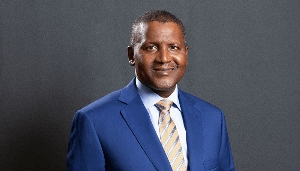Before one embarks on retirement, the planning process often takes time and effort.
At times it may seem like an overwhelming task but what you do today can help you achieve your retirement goals and allow you to maintain the lifestyle you want in your later years.
Putting money away for retirement is a habit we should all live by because, saving matters!
GhanaWeb takes an insight to some tips to make reaching those retirement goals feel a little more manageable.
1. Start saving:
The first move to reaching your retirement goals is to start by saving and keep saving.
If you are already saving, whether for retirement or another goal, its best to keep going! If you’re not saving, then it’s time to get started. Start as little as you can and try to increase the amount you save each month.
The sooner you start saving, the more time your money has to grow. Remember, it’s never too early or too late to start saving.
2. Know your retirement needs:
Realistically, by the time one reaches the retirement age, experts say you will need at least 70 to 90 percent of your savings from your income to maintain your living standards but the key to securing a good retirement is to plan ahead and know your needs before you stop working.
3. Contribute to your employer’s retirement savings plan:
If your employer offers one, it can allow you to learn and understand the plan, sign up to it and contribute the best you can.
It’s also important to ask for an individual benefit statement to determine what your benefit from your employer plan is worth.
Over time, compound interest and tax deferrals make a big difference in the amount you will accumulate so it’s important to find out about your plan from your employer and know if it fits with your retirement goals.
For instance, know how much you would need to contribute to get the full employer contribution and how long you would need to stay in the plan to get that money by the time you retire.
4. Find out about your Social Security benefits:
Social Security retirement benefits usually cover your earner’s income after retiring. One may often be able to estimate their benefits by requesting for monthly or quarterly statements from Social Security trust such as SSNIT.
5. Consider basic investment principles:
How you save can be as important as how much you save. Particularly, the type of investments you make play an important role in how much you’ll have saved at retirement.
Know how your savings or pension plan is invested and learn about your plan’s investment options and remember to always ask questions.
6. Put your savings in different types of investments:
It is important to put your savings in different types of investment accounts. By diversifying this way, you are more likely to reduce risk and improve return.
Your investment mix may change over time depending on a number of factors such as your age, goals, and financial circumstances. Financial security and knowledge go hand in hand.
Before you change jobs, find out what will happen to your pension benefit. Learn what benefits you may have from a previous employer and find out if you will be entitled to benefits from your spouse’s plan.
7. Don’t touch your retirement savings:
Finally, one must remain disciplined and must make the conscious effort not touch their retirement savings. If you withdraw your retirement savings now, you’ll lose principal and interest.
One can also lose tax benefits or have to pay withdrawal penalties.
If you change jobs, leave your savings invested in your current retirement plan, or roll them to your new employer’s plan.
Business News of Friday, 21 February 2020
Source: www.ghanaweb.com













